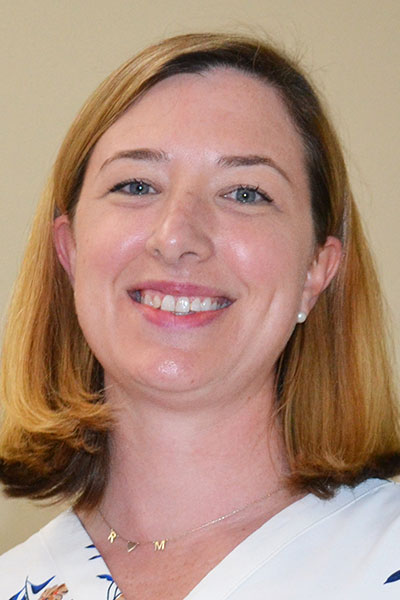Youth-onset type 2 diabetes has a more aggressive phenotype with faster disease progression than adult-onset type 2 diabetes. Youths with type 2 diabetes also develop earlier microvascular complications than youths with type 1 diabetes and adults with type 2 diabetes. In the past few years, researchers have observed a rising incidence of the disease among adolescents, in part because of the COVID-19 pandemic.
Three experts at the 83rd Scientific Sessions reviewed data and care strategies that could potentially improve results for this population during the symposium Improving Outcomes for Adolescents with Type 2 Diabetes. The session can be viewed on-demand by registered meeting participants at ADA2023.org. If you haven’t registered for the 83rd Scientific Sessions, register today to access the valuable meeting content through August 28.
Interdisciplinary teams for management of type 2 diabetes

Katie O’Sullivan, MD, Assistant Professor of Medicine and Pediatrics, University of Chicago, and her team recently participated in the Diabetes INSIDE 2.0 Improvement Practicum, which was designed to equip health care personnel with training in quality improvement and professional development to translate science and advocacy into improved diabetes outcomes through multidisciplinary teamwork.
The team’s goal was a 25% increase in the percentage of adolescents and young adults (ages 10-44 years) with type 2 diabetes that achieve A1C levels below 7% by June 2023. At the onset of the program in October 2022, 63.5% of the organization’s patients had A1C levels over 7% or did not have a documented A1C reading in the prior six months.
“Our primary drivers included broader concepts like addressing our patients’ goals, nutrition plans, physical behaviors, medication access and utilization, and social needs,” Dr. O’Sullivan explained. “We found that we had many change ideas about how we could influence these primary drivers, and we realized that many of us had overlapping roles and skills that we could use to implement these change ideas.”
One of the plan-do-study-act (PDSA) cycles, led by the pharmacy team, aimed to improve the percentage of eligible patients on glucagon-like peptide-1 (GLP-1) receptor agonist and sodium-glucose cotransporter-2 (SGLT2) inhibitor therapies by identifying and screening eligible patients for adding these therapies to their care regimen before upcoming visits. The number of patients added to GLP-1 receptor agonists rose from 68% to 75%, while SGLT2 inhibitor utilization rose from 14% to 16%. Nearly 20% of the pharmacy team’s recommendations resulted in new prescriptions.
The initiative did not significantly change the percentage of patients with A1C levels below 7%, but it did result in a modestly lower percentage of patients with unrecorded A1C measurements, from 9% to 6%.
Medical or surgical treatment for adolescents

Bariatric surgeries lead to higher diabetes remission rates among adults with type 2 diabetes, but there is little evidence for the effects of similar procedures on adolescents, said Amy Sanghavi Shah, MD, MS, Director of the Adolescent Type 2 Diabetes Program at Cincinnati Children’s Hospital.
A 2018 retrospective comparison between the Teen-Longitudinal Assessment of Bariatric Surgery (Teen-LABS) and Treatment Options of Type 2 Diabetes in Adolescents and Youth (TODAY) studies showed that compared to medical therapy, surgical treatment of severely obese adolescents with type 2 diabetes is associated with better glycemic management, reduced weight, and improvement of other comorbidities. Teen-LABS participants underwent a primary bariatric surgical procedure, while TODAY participants were randomized to receive metformin therapy alone or in combination with lifestyle intervention therapies.
While the data seems to support the need for additional investigation into the role of surgery for adolescents with type 2 diabetes, the results of surgery were not exclusively positive.
“In the Teen-LABS cohort, 23% of them needed reoperation or readmission related to their surgery,” Dr. Shah explained. “They also had more adverse events unrelated to the surgery.”
There are also limitations in data available on adolescent surgery for those with type 2 diabetes. Dr. Shah said that most of the data come from youths who underwent Roux-en-Y gastric bypass (RYGB) surgery. However, the most common bariatric surgery procedure today is the vertical sleeve gastrectomy.
The Surgical or Medical Treatment for Pediatric Type 2 Diabetes (STOMP) study is ongoing with research teams at Cincinnati Children’s Hospital and Colorado Children’s Hospital.
Community-based interventions

The East Harlem Partnership for Diabetes Prevention developed Project Help Educate to Eliminate Diabetes (HEED) to expand diabetes prevention efforts in the community, shared Nita Vangeepuram, MD, MPH, Assistant Professor of Pediatrics at Mount Sinai Institute for Health Equity Research.
“In our community in East Harlem, which is largely Hispanic, Latino, and Black, about one-third of high school students are obese, and we estimate that one out of three obese teens in our community may already have prediabetes and that this will increase in years to come,” Dr. Vangeepuram explained.
The study leveraged youth participatory action research, a tactic that helps young people identify challenges relevant to their lives, conduct research, and advocate for changes to improve community health.
“Young people are more likely to internalize messages if they can relate to the messenger, and it has been well documented that peers influence weight-related behaviors,” Dr. Vangeepuram said.
Peer-to-peer education focused on explanations of prediabetes and diabetes, healthy dietary considerations, instructions for physical activities, and other hands-on lessons to keep youths engaged.
In a 12-month follow-up, the intervention group showed modestly lower A1C levels and total cholesterol from baseline. While the control group also had minor drops in A1C, these patients exhibited more negative changes over 12 months, such as higher diastolic blood pressure.
“There was a significant difference in the change in metabolic syndrome (MetS) scores between groups, with a decrease in the intervention group and an increase in the control group, which indicated a mitigation of the overall risk profile in the intervention group compared to the control group,” Dr. Vangeepuram said.
She explained that while some studies have led to more significant impacts on clinical outcomes, they often demand resources that are less accessible in high-risk, low-resource communities. The HEED project achieved modest yet promising clinical results with minimal burden on patients, their parents, and community resources.